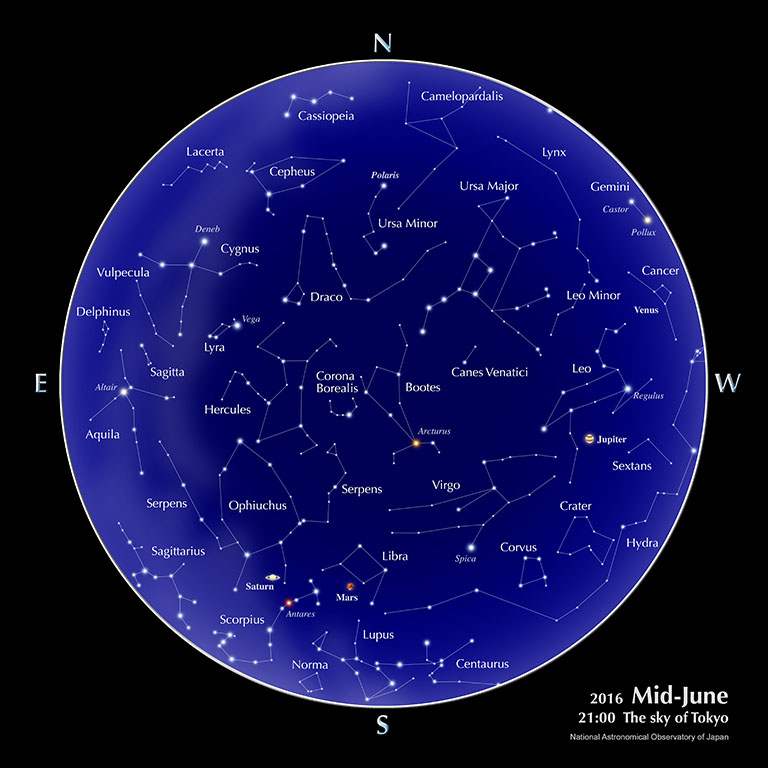Astronomical Information | 2016 | June
The sky of Tokyo

Calendar (June)
| 3 | Saturn at opposition |
| 5 | New Moon/ Greatest Western Elongation of Mercury |
| 7 | Venus at superior conjunction |
| 12 | First Quarter Moon |
| 14 | Neptune at stationary point |
| 20 | Full Moon |
| 21 | Summer solstice (Sun’s ecliptic longitude 90°) |
| 28 | Last Quarter Moon |
| 30 | Mars at stationary point |
The days for the peak activities of the meteor showers are based on the predictions of IMO (International Meteor Organization).
Planets
- Mercury
- Mercury reaches its greatest western elongation on the 5th, but its height is not even 10 degrees at 30 minutes before sunrise, making observations difficult.
- Venus
- Venus appears close to the Sun and is not suited for observations. It reaches superior conjunction on the 7th.
- Mars
- Located in the constellation Libra, Mars can be seen in the southeastern evening sky from the beginning to the middle of the month. At the end of the month, it can be seen in the southern evening sky. Mars makes its closest approach to Earth on May 31; but June is still a good time to observe Mars. Its brightness is -2.0 magnitude to -1.4 magnitude.
- Jupiter
- Located in the constellation Leo, Jupiter can be seen in the southwestern evening sky. Its brightness is -2.1 magnitude to -1.9 magnitude.
- Saturn
- Located in the constellation Ophiuchus, Saturn can be seen in the southeastern evening sky. It reaches opposition on the 3rd. This is a good time to observe Saturn. Its brightness is 0.0 magnitude to 0.1 magnitude.
Source: Ephemeris Computation Office, NAOJ
With the “Sky Viewer” you can easily explore the appearance of a typical urban night sky (planets and constellations are visible).The Celestial Phenomena section of the glossary explains the planetary phenomena terms: greatest elongation, opposition, conjunction, stationary, etc.